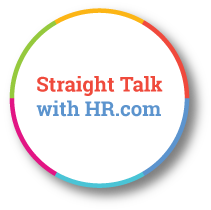Managing Pay Disparities In The Era Of Transparency
Exclusive interview with Mitch Boyarsky and Matthew T. Brown, Partners, Nelson Mullins
Posted on 05-22-2025, Read Time: 5 Min
Share:

  |
“Non-competes can be more difficult to enforce, depending upon the factual backdrop. Enforcing non-competes, particularly on a preliminary basis through injunctive relief, also can be expensive and disruptive. Accordingly, employers should carefully consider whether to utilize non-competes and ensure their agreements are both narrowly tailored and compliant with state-specific requirements. Employers also should consider whether it is appropriate to use non-competes on a wholesale basis or, instead, a more limited scope based on the nature of an employee’s role, ” said Mitch Boyarsky and Matthew T. Brown, Partners, Nelson Mullins. |
In an exclusive interview, Mitch & Matthew discuss key compliance priorities for 2025, including auditing employee classifications, adjusting salary structures, and preparing for pay transparency mandates. They highlight actionable steps for employers to balance legal risks with workforce expectations in a rapidly changing policy climate.

Excerpts from the interview:
Q: How can organizations proactively audit employee classifications, adjust salary structures, and update HR policies to ensure compliance with the upcoming changes to the federal overtime threshold?
Mitch & Matthew: With constantly evolving changes to federal wage-hour law, employers should review employee classifications in light of the current state of the law. In April 2024, the U.S. Department of Labor (DOL) issued a final rule to increase the minimum salary thresholds for overtime exemptions under the Fair Labor Standards Act (FLSA). On November 15, 2024, a federal court enjoined the rule, finding that it exceeded the DOL’s authority under the FLSA. The DOL’s pending appeals have been paused by the current administration, meaning the 2019 threshold levels remain in effect, and future changes to the salary thresholds are uncertain.
Notwithstanding these developments, employers should continue to monitor changes to overtime rules and thresholds. Likewise, employers should audit their workforce for proper employee classification, preferably on an annual basis. Audits should include a close review of job duties and roles, maintaining accurate and up-to-date job descriptions and reporting structures, reviewing compensation across employees and groups, and related analysis with the assistance of counsel to ensure proper employee classification.
Notwithstanding these developments, employers should continue to monitor changes to overtime rules and thresholds. Likewise, employers should audit their workforce for proper employee classification, preferably on an annual basis. Audits should include a close review of job duties and roles, maintaining accurate and up-to-date job descriptions and reporting structures, reviewing compensation across employees and groups, and related analysis with the assistance of counsel to ensure proper employee classification.
Q: What are the key business and legal implications of the non-compete ban, and how can HR and legal teams effectively respond—particularly through the use of alternatives like non-disclosure and non-solicitation agreements?
Mitch & Matthew: Federal rule-making activity regarding non-competes seems to be over for now, but state law may still be evolving, for which employers should consider alternative protections in their agreements. In 2024, a federal court enjoined the Federal Trade Commission’s (FTC) proposed ban on essentially all non-competes nationwide. The FTC has now paused its appeal of this ruling, and new FTC leadership under the Trump Administration is expected to not pursue a nationwide ban.
Although a federal non-compete ban remains unlikely, states continue to actively legislate to restrict and prohibit non-competes. For example, in 2025, Wyoming and Virginia passed new laws restricting non-compete usage, while New York is currently considering a bill to ban non-competes subject to limited exceptions.
Non-competes can be more difficult to enforce, depending upon the factual backdrop. Enforcing non-competes, particularly on a preliminary basis through injunctive relief, also can be expensive and disruptive. Accordingly, employers should carefully consider whether to utilize non-competes and ensure their agreements are both narrowly tailored and compliant with state-specific requirements. Employers also should consider whether it is appropriate to use non-competes on a wholesale basis or, instead, a more limited scope based on the nature of an employee’s role. In addition, non-solicit and confidentiality restrictions may be equally effective or could complement a non-compete depending on specific employee roles and duties, access to customer or proprietary information, and other business factors.
Although a federal non-compete ban remains unlikely, states continue to actively legislate to restrict and prohibit non-competes. For example, in 2025, Wyoming and Virginia passed new laws restricting non-compete usage, while New York is currently considering a bill to ban non-competes subject to limited exceptions.
Non-competes can be more difficult to enforce, depending upon the factual backdrop. Enforcing non-competes, particularly on a preliminary basis through injunctive relief, also can be expensive and disruptive. Accordingly, employers should carefully consider whether to utilize non-competes and ensure their agreements are both narrowly tailored and compliant with state-specific requirements. Employers also should consider whether it is appropriate to use non-competes on a wholesale basis or, instead, a more limited scope based on the nature of an employee’s role. In addition, non-solicit and confidentiality restrictions may be equally effective or could complement a non-compete depending on specific employee roles and duties, access to customer or proprietary information, and other business factors.
Q: What practical strategies can organizations use to manage internal pay disparities, recalibrate compensation structures, and ensure compliance with evolving pay transparency laws?
Mitch & Matthew: Employers should consistently audit internal compensation levels and differences among workers in the same or similar roles or levels of seniority to manage risk around pay disparity. Many states, such as Colorado, Massachusetts, and New York, have pay transparency laws imposing significant obligations on employers, both for the hiring process and during employment.
Employers who conduct hiring in new states and for remote positions should check for applicable pay transparency laws and related obligations in the employee’s state. Likewise, employers should ensure job postings are accurate and include good faith salary ranges where such information is required under state law. For existing employees in states like Massachusetts, employers must comply with pay transparency laws in relation to promotions, transfers, and in relation to requests from employees.
Employers should also review their existing policies and procedures to ensure they are not restricting or prohibiting employees from discussing compensation, where such restrictions may run afoul of applicable state law.
Employers who conduct hiring in new states and for remote positions should check for applicable pay transparency laws and related obligations in the employee’s state. Likewise, employers should ensure job postings are accurate and include good faith salary ranges where such information is required under state law. For existing employees in states like Massachusetts, employers must comply with pay transparency laws in relation to promotions, transfers, and in relation to requests from employees.
Employers should also review their existing policies and procedures to ensure they are not restricting or prohibiting employees from discussing compensation, where such restrictions may run afoul of applicable state law.
Q: Can you share guidance on evaluating worker status in light of recent high-profile rulings—and how the rise of gig work and AI-driven platforms is complicating compliance efforts?
Mitch & Matthew: On May 1, 2025, the DOL announced that it would no longer enforce the Biden-era labor rule that aimed to reclassify gig workers as employees rather than independent contractors. Gig workers are primarily found in sectors like ridesharing, personal services, food delivery, and other freelance or temporary work arrangements.
In addition to announcing that it would no longer enforce the Biden Rule, the DOL instructed businesses to utilize “longstanding principles” outlined in older agency guidance documents when determining whether a worker should be classified as an employee or independent contractor. Specifically, this older standard mulls seven prongs: whether the work provided is integral to a company’s business; the duration of the working relationship; the worker’s investment in facilities and equipment; the level of control of a company; the worker’s ability for profit and loss; how much judgment and initiation a worker had; and the level of independent organization and operation.
The May 1, 2025, announcement represents a shift in labor policy with significant implications for gig economy businesses and workers. While businesses celebrate the return to a more flexible labor market, labor advocates warn that this change will leave many gig workers without protections. Employers should continue to monitor developments related to gig workers and consult with counsel to ensure proper employee/contractor classification.
In addition to announcing that it would no longer enforce the Biden Rule, the DOL instructed businesses to utilize “longstanding principles” outlined in older agency guidance documents when determining whether a worker should be classified as an employee or independent contractor. Specifically, this older standard mulls seven prongs: whether the work provided is integral to a company’s business; the duration of the working relationship; the worker’s investment in facilities and equipment; the level of control of a company; the worker’s ability for profit and loss; how much judgment and initiation a worker had; and the level of independent organization and operation.
The May 1, 2025, announcement represents a shift in labor policy with significant implications for gig economy businesses and workers. While businesses celebrate the return to a more flexible labor market, labor advocates warn that this change will leave many gig workers without protections. Employers should continue to monitor developments related to gig workers and consult with counsel to ensure proper employee/contractor classification.
Q: How can employers develop scalable systems to stay compliant with varying state laws on paid leave, scheduling, and remote work?
Mitch & Matthew: Employers with locations in multiple states and/or remote workers spread across the country need to remain cognizant of state law requirements and obligations in the states where their employees work.
Many employers are transitioning to generalized handbooks with accompanying state supplements or addenda. State supplements provide required notices and policies under specific state laws and allow employers to avoid continuously updating their general handbook in response to changes under limited or isolated state laws. Other employers opt to treat all employees the same based on the most generous policies to ensure compliance across their workforce.
Employers should ensure their human resources teams and leaders are trained to comply with state-specific laws and remain up to date on changing compliance requirements. Where companies operate in multiple states, it is prudent for human resources to communicate proactively with counsel about state law changes and related compliance measures.
Many employers are transitioning to generalized handbooks with accompanying state supplements or addenda. State supplements provide required notices and policies under specific state laws and allow employers to avoid continuously updating their general handbook in response to changes under limited or isolated state laws. Other employers opt to treat all employees the same based on the most generous policies to ensure compliance across their workforce.
Employers should ensure their human resources teams and leaders are trained to comply with state-specific laws and remain up to date on changing compliance requirements. Where companies operate in multiple states, it is prudent for human resources to communicate proactively with counsel about state law changes and related compliance measures.
Error: No such template "/CustomCode/topleader/category"!

